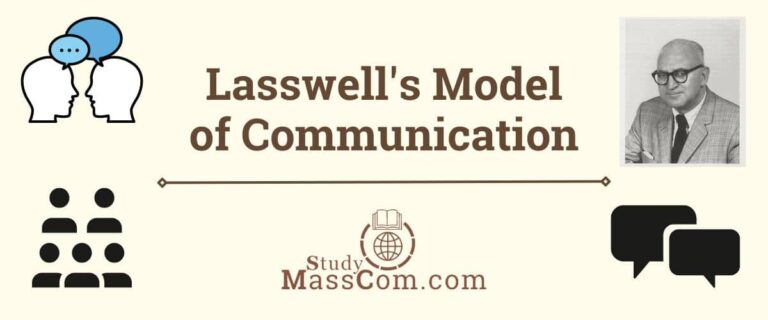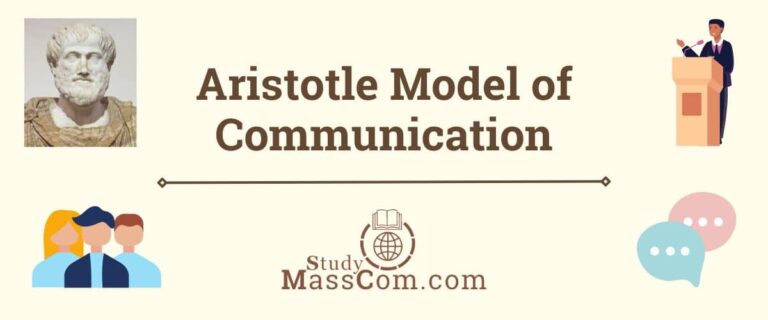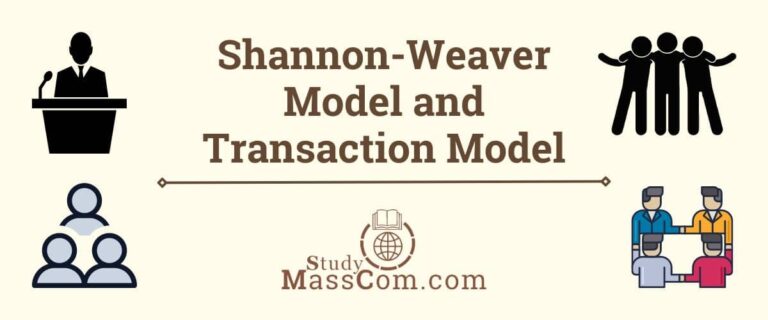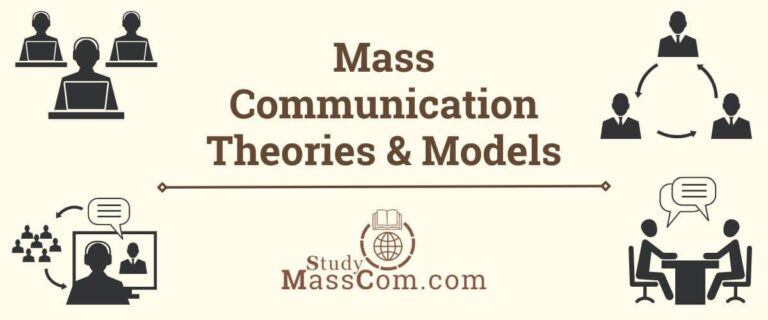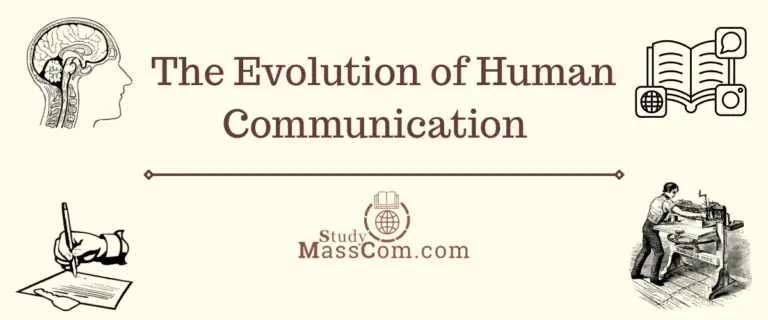White’s Model of Communication: Advantages & Disadvantages
Communication is a multifaceted process that underpins all human interactions, shaping relationships, societies, and cultures. Over the years, numerous scholars have proposed models to elucidate the intricate dynamics of communication. One such model that has garnered attention for its holistic approach is Eugene White’s Model of Communication. Developed by Eugene White, an esteemed communication theorist, this model offers a nuanced perspective that encompasses not only the transmission of messages but also the broader socio-cultural context in which communication unfolds. In this article, we embark on a comprehensive journey to unpack Eugene White’s Model of Communication, delving into its key components, theoretical foundations, practical applications, and critical insights.

Overview of Eugene White’s Model of Communication
Eugene White’s Model of Communication is a comprehensive framework that elucidates the complexities inherent in the communication process. Unlike traditional models that primarily focus on the sender, message, channel, receiver, and feedback, White’s model expands the scope to include socio-cultural factors, power dynamics, and the role of technology in shaping communication dynamics. By integrating various elements, this model provides a holistic understanding of communication as a dynamic phenomenon embedded within broader societal contexts.
Key Components of Eugene White’s Model
Here are the key components of White’s model of communication that include but are not limited to:
Socio-Cultural Context
At the heart of Eugene White’s Model is the recognition of communication as deeply intertwined with sociocultural factors. White emphasizes that communication does not occur in isolation but is influenced by the cultural norms, values, beliefs, and social structures prevalent in a given society. Understanding the socio-cultural context is crucial for interpreting messages accurately and navigating communication effectively.
Power Dynamics
White’s model acknowledges the inherent power dynamics that permeate communication interactions. Power can manifest in various forms, including social status, institutional authority, and access to resources. These power differentials influence how messages are transmitted, received, and interpreted. White highlights the importance of critically examining power dynamics to understand who holds influence in communication exchanges and how it shapes communication outcomes.
Channels and Technology
In today’s digital age, communication channels have expanded beyond traditional face-to-face interactions to include various technological platforms. Eugene White’s Model recognizes the significant impact of technology on communication patterns and dynamics. The model explores how different communication channels, such as social media, email, and video conferencing, shape the transmission and reception of messages, as well as their implications for interpersonal relationships and societal discourse.
Feedback and Adaptation
White’s model emphasizes the iterative nature of communication, characterized by continuous feedback and adaptation. Feedback plays a vital role in refining messages, clarifying intentions, and addressing misunderstandings. According to the model, effective communication entails a dynamic process of receiving and responding to feedback, adjusting one’s message and approach based on the context and audience’s response.
Cultural Sensitivity and Competence
Central to Eugene White’s Model is the concept of cultural sensitivity and competence. Communication competence goes beyond linguistic proficiency to encompass an understanding of cultural nuances, norms, and communication styles. White underscores the importance of recognizing and respecting cultural diversity in communication interactions, advocating for cultural sensitivity as a foundational skill for effective communication.
Learn more about Schramm’s Model of Communication.
Theoretical Foundations of White’s Model of Communication
Eugene White’s Model of Communication draws from various theoretical frameworks to provide a comprehensive understanding of communication dynamics.
Cultural Studies
White’s emphasis on the socio-cultural context of communication aligns with the principles of cultural studies, a multidisciplinary field that examines the role of culture in shaping social phenomena. Cultural studies scholars emphasize the significance of cultural context in influencing communication practices, media representations, and power dynamics. White’s model integrates this perspective by highlighting the interplay between communication and culture.
Critical Theory
Critical theory, rooted in the Frankfurt School tradition, offers insights into power dynamics, ideology, and social critique. Eugene White’s Model incorporates elements of critical theory by examining communication through a critical lens, questioning dominant power structures, and advocating for social justice and equity in communication practices. The model encourages scholars and practitioners to challenge hegemonic discourses and promote inclusive communication spaces.
Media Ecology
Media ecology, a theoretical framework developed by Marshall McLuhan and Neil Postman, explores the interrelationships between media, technology, and culture. Eugene White’s Model acknowledges the impact of technology on communication dynamics and adopts a media ecological perspective by examining how communication technologies shape human interaction, social relationships, and cultural norms.
Read about the Shannon-Weaver Model of Communication.
Advantages and Strengths of White’s Model of Communication
Eugene White’s Model of Communication offers several advantages that contribute to its relevance and applicability in understanding and analyzing communication processes. These advantages include:
Holistic Approach
One of the key advantages of Eugene White’s Model is its holistic approach to understanding communication. Unlike some traditional models that focus solely on the linear transmission of messages, White’s model incorporates a wide array of elements and variables, including sender-receiver dynamics, contextual factors, feedback mechanisms, and media technologies. This comprehensive perspective enables a more nuanced understanding of the complexities involved in communication.
Emphasis on Context
White’s model places significant emphasis on the importance of contextual factors in shaping communication processes. It recognizes that communication does not occur in isolation but is influenced by the physical environment, cultural background, social norms, and situational context. By considering these contextual elements, the model provides insights into how communication is adapted and interpreted within different settings, leading to more effective communication strategies.
Interactive and Transactional Nature
Eugene White’s Model acknowledges the interactive and transactional nature of communication. It emphasizes that communication involves a reciprocal exchange of messages between senders and receivers, with both parties influencing and being influenced by each other. This recognition of the dynamic nature of communication allows for a more nuanced analysis of how messages are encoded, decoded, and interpreted within interpersonal and mediated communication contexts.
Integration of Media Technologies
In today’s digital age, media technologies play a significant role in shaping communication practices. White’s model incorporates the influence of various media channels, including print, broadcast, digital, and social media, on the dissemination and reception of messages. This integration of media technologies allows for a more comprehensive understanding of how communication is mediated and adapted across different platforms.
Relational Dynamics
White’s model acknowledges the importance of relational dynamics in communication. It recognizes that communication occurs within the context of interpersonal relationships, where factors such as power dynamics, trust, and rapport influence the effectiveness of communication. By considering these relational factors, the model provides insights into how communication can be tailored to build and maintain positive relationships.
Practical Applications
The holistic nature of Eugene White’s Model lends itself to various practical applications across different spheres of communication. From interpersonal communication to organizational communication, media campaigns, and cross-cultural communication, the model offers valuable insights and frameworks for analyzing and improving communication processes in diverse contexts.
Overall, Eugene White’s Model of Communication offers several advantages that contribute to its relevance and applicability in understanding the complexities of human interaction. Its holistic approach, emphasis on context, recognition of the interactive nature of communication, integration of media technologies, consideration of relational dynamics, and practical applications make it a valuable framework for scholars, practitioners, and educators in the field of communication studies.
What is Berlo’s SMCR Model? Learn more!
Disadvantages and Limitations of White’s Model of Communication
While Eugene White’s Model of Communication offers a comprehensive framework for understanding communication dynamics, it is not without its critiques and limitations.
Complexity and Contextual Specificity
Some critics argue that White’s model may be overly complex and contextually specific, making it challenging to apply universally across diverse communication contexts. The model’s emphasis on sociocultural factors and power dynamics may overlook other important variables that influence communication outcomes, such as individual differences and situational factors.
Limited Emphasis on Cognitive Processes
Eugene White’s Model places less emphasis on cognitive processes, such as perception, cognition, and information processing, which play a significant role in how messages are encoded, decoded, and interpreted. Critics argue that a more comprehensive understanding of communication requires integrating cognitive theories into the model to account for individual differences in processing information.
Underrepresentation of Non-verbal Communication
While White’s model acknowledges the importance of non-verbal communication, it may underrepresent its significance compared to verbal communication. Non-verbal cues, such as body language, facial expressions, and gestures, convey rich layers of meaning that complement verbal messages. Critics suggest that a more balanced approach to verbal and non-verbal communication is needed in the model.
Explore Lasswell’s Model of Communication in detail.
Practical Applications of White’s Model of Communication
Eugene White’s Model of Communication offers practical insights and applications across various domains, including interpersonal communication, organizational communication, media studies, and intercultural communication.
Interpersonal Communication
In interpersonal communication settings, White’s model provides a framework for understanding the complexities of relational dynamics, power imbalances, and cultural differences. By fostering cultural sensitivity and competence, individuals can navigate communication challenges more effectively, build stronger relationships, and foster mutual understanding.
Organizational Communication
Within organizations, Eugene White’s Model informs practices related to leadership communication, team dynamics, and organizational culture. By recognizing and addressing power differentials, organizations can promote transparency, equity, and inclusivity in communication processes. The model also highlights the role of technology in shaping internal communication channels and fostering collaboration in virtual work environments.
Media Studies
In media studies, White’s model offers insights into the influence of media representations, technological platforms, and cultural narratives on public discourse and social identities. By critically examining media messages and their socio-cultural implications, scholars can analyze how media shapes public perceptions, values, and attitudes, and contribute to broader social debates.
Intercultural Communication
Eugene White’s Model is particularly relevant in the context of intercultural communication, where individuals from diverse cultural backgrounds interact. By emphasizing cultural sensitivity and competence, the model facilitates cross-cultural understanding, reduces miscommunication, and promotes respectful engagement across cultural boundaries. It encourages practitioners to consider cultural norms, values, and communication styles when navigating intercultural encounters.
Delve into Transactional Communication Model, and its pros and cons.
Example of White’s Model of Communication
To illustrate White’s Model of Communication, let’s consider an example of a team meeting in a corporate setting. Imagine a team of professionals working on a project in a corporate environment. They gather for a scheduled meeting to discuss the progress of the project, address any challenges, and plan the next steps.
Sender-Receiver Dynamics
Senders: In this scenario, the senders are the team members who initiate and contribute to the communication process. They include project managers, team leaders, and individual team members.
Receivers: The receivers are the other team members who receive and interpret the messages conveyed during the meeting. They listen to presentations, ask questions, and provide feedback.
Contextual Factors
Physical Environment: The meeting takes place in a conference room within the corporate office, providing a formal setting for communication.
Cultural Background: The team members come from diverse cultural backgrounds, each bringing their own communication styles and norms to the interaction.
Situational Context: The meeting is scheduled during regular working hours and is focused on discussing project-related matters, creating a specific situational context for communication.
Message Encoding and Decoding
Encoding: The senders encode their messages by preparing presentations, creating slides, and articulating their ideas verbally during the meeting.
Decoding: The receivers decode the messages by listening to presentations, interpreting visual aids, asking clarifying questions, and engaging in discussions to understand the content and objectives of the meeting.
Feedback Mechanisms
Verbal Feedback: Team members provide verbal feedback by asking questions, expressing opinions, and offering suggestions during the meeting.
Non-Verbal Feedback: Non-verbal cues such as nodding, facial expressions, and body language also serve as feedback indicators, conveying agreement, disagreement, or confusion.
Relational Dynamics
Power Dynamics: The project manager and team leaders hold authoritative roles within the team, influencing the dynamics of communication. However, the team fosters an open and collaborative environment where all members are encouraged to participate and contribute.
Trust and Rapport: The team members have established trust and rapport through previous interactions, which facilitates open communication and constructive dialogue during the meeting.
Media Technologies
Presentation Software: The team utilizes presentation software such as PowerPoint or Google Slides to visually convey information and data during the meeting.
Email and Messaging Apps: Outside of the meeting, team members may use email or messaging apps to communicate asynchronously, share documents, and coordinate tasks related to the project.
In this example, Eugene White’s Model of Communication helps analyze the various elements and dynamics at play during the team meeting. By considering sender-receiver dynamics, contextual factors, message encoding and decoding, feedback mechanisms, relational dynamics, and media technologies, we gain a comprehensive understanding of how communication unfolds within the corporate setting.
Read more about Mass Communication Theories and Models.
Conclusion
Eugene White’s Model of Communication offers a comprehensive framework that captures the complexity of human communication processes. By integrating elements such as sender-receiver dynamics, contextual factors, feedback mechanisms, and media technologies, the model provides valuable insights into the multifaceted nature of communication. While it has found applications in various spheres of communication, it is essential to recognize its critiques and limitations and use it as a guiding framework rather than a prescriptive model. As communication continues to evolve in an increasingly interconnected world, Eugene White’s Model provides a valuable foundation for understanding and navigating the complexities of human interaction.
Don’t forget to check out the 7 important steps in a communication process.
FAQs
Eugene White’s Model of Communication is a dynamic framework that encompasses sender-receiver dynamics, contextual factors, message encoding and decoding, feedback mechanisms, relational dynamics, and media technologies. It emphasizes the interactive and transactional nature of communication, recognizing the reciprocal exchange of messages between senders and receivers. The model integrates various communication theories and perspectives to provide a comprehensive understanding of the complexities involved in human interaction. It is applicable across diverse communication contexts, offering valuable insights into how communication processes unfold and how they can be effectively analyzed and improved.
The key components of Eugene White’s Model of Communication include sender-receiver dynamics, contextual factors, message encoding and decoding, feedback mechanisms, relational dynamics, and media technologies. These components collectively form a comprehensive framework for understanding communication processes. Sender-receiver dynamics acknowledge the interaction between communicators, while contextual factors consider the influence of the environment and culture. Message encoding and decoding refer to the formulation and interpretation of messages, while feedback mechanisms facilitate ongoing communication. Relational dynamics recognize the role of interpersonal relationships, and media technologies highlight the impact of various communication channels.

